#Oklahomawinetours
Explore tagged Tumblr posts
Text
WHAT IS AN ESTATE OKLAHOMA WINERY?
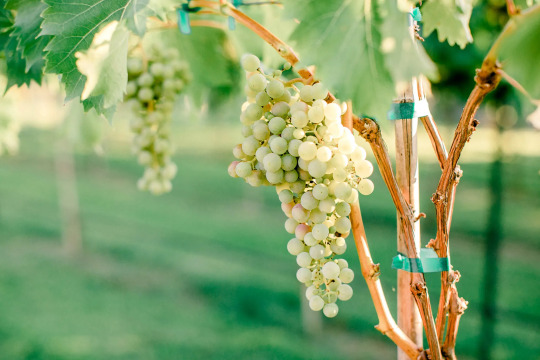
While exploring a discover Oklahoma winery, you may notice “estate winery” in the title or “estate bottled” or “estate grown” on the wine labels. The meanings of these terms vary throughout the world. Some countries use the term “estate” in the same way the United States uses the term “estate-bottled” when discussing wine.
Although these words are often used interchangeably, each has a different meaning in American winemaking, providing some insight into how your local wine was produced.
What Is An Estate Winery?
If an Oklahoma winery uses the term “estate winery,” the winery controls the winemaking process. The winery has complete control, from growing the grapes to bottling the wine.
Many wineries use the terms “estate” or “estate-grown” on their labels freely because it is not a legally-bound term in the federal government. These terms, while indicating how the wine may have been produced, are a broad definition.
Estate or estate-grown wines are typically grown on the same property and region. Still, the vineyards themselves may be on different plots of land. An Oklahoma winery near I-40 manages or controls the production of the wine, but they may own all, some, or none of the land in which the grapes are grown. In sum, as long as the same entity farms the wine, wineries can use the terms “estate” or “estate-grown.���
What Are Estate-Bottled Wines?
Using the term “estate-bottled” grows more complicated. Wines labeled as “estate-bottled” are backed by specific legal requirements determined by the federal government. For a winery to use this term, 100% of the wine must be owned and farmed by the same entity. An Oklahoma winery must own all the land, vineyards, and grapes and produce the wine within the same American Viticultural Area. From wine to bottle, an estate-bottled wine never leaves the winery’s premises, giving them complete control of the entire process.
The American Viticultural Area, or AVA, must be classified on an estate-bottled wine label. The AVA is the specific type of appellation of origin indicating that growing grapes used in the wine distinctly differ from growing grapes in other geographic regions. Contact an Oklahoma winery near I-40 to discover your wine’s AVA.
What About Single-Vineyard Wines?
Single-vineyard wines are when the grapes are grown in one vineyard. Because of some overlapping characteristics, estate or estate-bottled wines can also be considered single-vineyard wines.
It is commonly assumed that estate, estate-bottled, and single-vineyard wines are of the highest quality. However, this is not necessarily true. Several factors, such as climate, grape varietal, fermentation process, individual preferences, and more, play a role in determining the quality of the wine.
Ready to Discover Oklahoma Wineries?
Whether you are looking for single-vineyard or estate-bottled wines, you are sure to find some new favorites in Oklahoma. At the Oklahoma Grape Industry Council, we have over 60 members that are ready to help you cultivate a love for Oklahoma wine. Contact us today for more information, or visit our website to find a discover Oklahoma winery near you.
#Oklahomawinery#OklahomawinerynearI40#discoverOklahomawinery#madeinoklahomawine#buylocalwines#oklahomawineryneari35#oklahomawinetours#winetastingokc#growinggrapesinoklahoma#oklahomavineyard
0 notes
Text
The History Of Grapes In Oklahoma
Oklahoma has a long history of vineyards and winemaking dating back to the 19th century. Oklahoma, however, was the second-highest producer of grapes in the nation until the Dust Bowl of the 1930s. Although Prohibition was repealed in 1933, Oklahoma remained a dry state until voters changed the law with the Liquor Control Act of 1959. Click the link for more info! https://discoveroklahomawines.com/learn/
0 notes
Text
Does the Shape Of the Wine Glass Matter at a Wine Tasting OKC?
Attending a wine tasting OKC is an excellent way to try local wines and broaden your horizons. Many elements affect your tasting experience, from your perfume to the way you swirl your glass. As such, the shape of your wine glass is an often-forgotten but important detail that can make a difference in the taste and smell of the wine.
Why Does the Shape Of a Wine Glass Matter?
Wine glasses come in various shapes and sizes. Although some glasses are shaped purely for aesthetic purposes, many are designed to enhance your wine tasting experience on the Oklahoma wine trails.
The anatomy of a wine glass typically consists of three parts: the foot, the stem, and the bowl. Aromas are released as oxygen reaches the wine in the bowl. As they release, the aromas collect in the space between the wine and the edge of the bowl. The shape of your glass affects the density and position of the aroma vapor at the bowl’s opening, significantly adding to the flavor of your wine.
Different Shapes of Wine Glasses
Whether you are tasting wines at a travel Oklahoma winery or in the comfort of your own home, it is recommended to know which glasses are best for enjoying certain wines to make for a great tasting experience.
White Wines
Full-bodied white wines are often served in wider glasses, as they taste better when slightly oxidized. Most lighter-bodied white wines are best served in smaller bowled glasses, allowing less oxygen to reach the wine. This allows the wine to maintain its crisp, light flavors.
Red Wines
At a wine tasting OKC, red wines are often served in glasses with rounded bowls and wide openings. The oxygen exposure helps soften the intense tannins prominent in most red wines. There are different glasses for light, medium, and full-bodied reds:
Large Bordeaux glass — These glasses are designed to help smooth the tannins in full-bodied, bold red wines.
“Standard” red wine glass — These are best for medium-to-full-bodied reds with spicy notes or high alcohol content.
Burgundy glass — The large bowl is best for collecting the delicious aromas of lighter-bodied, delicate red wines.
Sparkling Wines
Sparkling wines like Champagne are often served in tall, narrow flutes. These glasses are meant to be held by the stem to prevent body heat from warming the wine. Likewise, the narrow shape keeps oxygen from diminishing the delicious bubbles.
Discover Local Wines on the Oklahoma Wine Trails
If you are looking to discover local wines, you are sure to find a favorite when you visit a travel Oklahoma winery. At the OGIC, our members throughout Oklahoma serve delicious local wines and provide exceptional experiences for you and your loved ones. Contact us today for more information.
#winetastingOKC#Oklahomawinetrails#travelOklahomawinery#madeinoklahomawine#buylocalwines#oklahomawineryneari35#growinggrapesinoklahoma#oklahomawinetours#oklahomavineyard#oklahomawinery
0 notes
Text
HOW TO PLAN A WINE TASTING PARTY WITH OKLAHOMA WINES
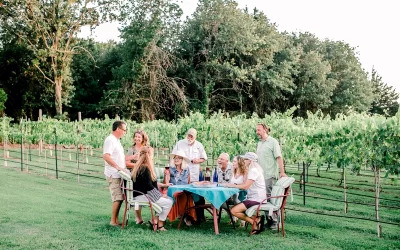
With the warmer weather approaching, you may begin planning your summer gatherings with your loved ones. A great way to entertain your guests is by hosting a wine tasting. Planning your wine tasting allows your friends and family to taste Oklahoma wines in a comfortable environment. However, wine tastings are unlike any other event, and there are specific details to keep in mind when planning.
Things to Keep in Mind When Planning Your Wine Tasting
Determine a Theme
Choosing a theme for your wine tasting will help create a cohesive, fun event. Some popular themes include:
Regions – choose a variety of wines from specific areas nationally or internationally, such as France, Italy, California, or Oklahoma wines.
Variety – taste a single variety, such as Pinot Grigio, from different regions to compare.
Blind Tastings – hide each bottle of wine in a brown bag, allowing your guests to use their senses to determine the wine style and varietal.
Random – themes can be centered around anything you want, such as holidays, movies, or destinations. Be creative!
Adorning your space with matching decorations, including fun costumes, and offering themed hors d’oeuvres are great ways to liven up your wine tasting and take your guests on an adventure.
Decide Which Wines to Purchase
Having a theme can help narrow down when looking to buy local wines for your party. Do your research online to discover which wines would be best for your theme, or get in touch with a local store or winery for more personal expertise.
Likewise, ensure you buy the appropriate amount of wine for your number of guests. Each bottle is about 24 ounces, allowing you to serve 2-ounce tastes for 12 guests or a generous 6-ounce taste for four guests. As a general rule of thumb, always buy more wine than you need and contact your local winery for estimates if needed.
Do Your Research
Before your event, learning about the discover Oklahoma wines your guests will be tasting is essential. Create information cards for each wine to hand out to guests, providing information about the wine’s history, varietal, region of origin, and more.
Another important aspect to research is your desired serving method. Decide if you would like your guests to self-pour their samples, pour yourself, or hire someone to help pour. Likewise, determine which order your wines will be served. For multi-varietal tastings, hosts generally start with bubbly or light white wines and finish with bold reds and dessert wines.
Keep the Food Light
Food is an essential component of any wine tasting. Whether making the food yourself, having a potluck with your guests, or hiring a caterer, keep the menu light to ensure the wine isn’t overpowered. Research and sample which foods and hors d’oeuvres pair best with each wine. Classics include charcuterie boards, bitter chocolates, and fruits. Likewise, try to avoid serving smelly foods, as the scents can greatly affect the taste of the wines.
Discover Oklahoma Wines for Your Wine Tasting Party
Wine tasting parties are a unique way to spend time with friends and family. As such, there are many options available in Oklahoma to buy local wines. Visit our website to find a local winery or vineyard near you, or contact us for more information.
#Oklahomawines#buylocalwines#discoverOklahomawines#winetastingokc#oklahomavineyardsnearme#oklahomawineryneari35#oklahomawinetours#growinggrapesinoklahoma#oklahomavineyard#oklahomawinery
0 notes
Text
What to Expect During Oklahoma Wine Tours
As you venture on the Oklahoma wine trails, touring a winery is a great way to taste local wines and gain more insight into the local wine industry. Every wine tour will be different depending on the location. However, there are a few things you can generally expect on every wine tour.
Things to Expect on Oklahoma Wine Tours
Touring the Property
Whether you travel Oklahoma vineyards or visit local wineries, most wine tours include an in-depth property tour. Most tours will show you the different stages of their winemaking process. They usually begin by showcasing the rows of grapevines before moving indoors to their processing area. Tours typically end in the wine cellar for guests to peek at the beautiful wine barrels and rows of bottles waiting to be opened.
Learning History
Throughout your tour, the guide will share the history of their establishment. Likewise, many establishments seek to educate guests about the popular grape varieties in the area, the different types of wines they produce, and more detailed information about their unique winemaking process. If you have questions, don’t be afraid to ask your guide for more information.
Tasting Local Wines
One of the most fun parts of Oklahoma wine tours is tasting the wines. Most wine tours have a selection of one to six wines to sample. As you taste, the guide will give you insight into what region the grapes are from, how each wine is made, and details about its flavors and aromas. Some locations also offer delicious appetizers made from local products for an extra fee.
How to Prepare for Your Wine Tour
Wine tours are an excellent way to taste local wines and increase winemaking knowledge. When preparing to travel Oklahoma vineyards, here are a few tips to keep in mind to ensure the success of your trip
1. Make a reservation.
2. Dress comfortably.
3. Practice your tasting technique beforehand.
4. Take notes during the tasting.
5. Tip appropriately.
6. Be prepared to purchase a bottle.
Discover Local Wines on the Oklahoma Wine Trails
Whether you are new to wines or an experienced connoisseur, embarking on a wine tour will surely be a treat. At the OGIC, our members throughout Oklahoma offer fantastic wine tours, tastings, and other fun experiences. If you would like more information about our organization, pleasecontact ustoday.
#Oklahomawinetrails#travelOklahomavineyard#Oklahomawinetours#winetastingokc#buylocalwines#oklahomavineyardsnearme#oklahomawineryneari35#oklahomawines#growinggrapesinoklahoma#oklahomavineyard
0 notes
Text
WHAT IS A CRUSH PAD FOR AN OKLAHOMA WINERY NEAR I-40?
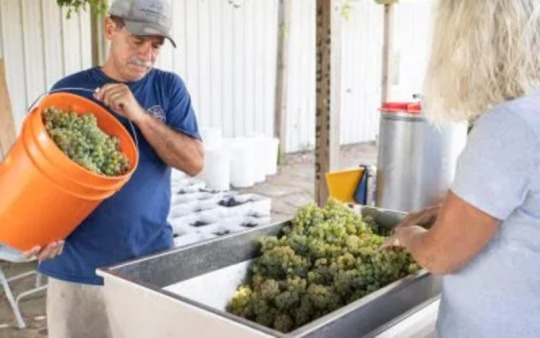
If you tour an Oklahoma winery near I-40, you may see some of the equipment used to produce delicious wines, such as tanks, pumps, and barrels. One area that has a vital role in winemaking is a “crush pad,” as it is where the process of transforming grapes into wine begins.
There are five primary stages of winemaking: (1) harvesting, (2) crushing and pressing, (3) fermentation, (4) clarification, and (5) aging and bottling. As referenced in its name, crush pads are used during the second step of the process.
The History of Crush Pads
For thousands of years, winemakers would manually crush grapes to prepare the juice for fermentation. When considering this process, the first image to come to mind is likely that of people stomping on grapes in barrels or large vats. The area or platform where this took place became known as a “crush pad.”
Modern Crush Pads at an Oklahoma Winery Near I-35
Due to many advancements in winemaking technology, crushing grapes into pulp and juice is no longer an entirely manual process. Current crush pads can be understood as the part of an Oklahoma winery near I-35 designated for the equipment used to process harvested grapes into wine.
How Are the Grapes Crushed?
After the grapes are harvested, everything is brought to the crush pad. After unwanted materials (like leaves) are removed and the best grape clusters are selected, winemakers move the clusters into a machine to be crushed. There are various types of machinery used for this process; for example, a winery may have a:
Crusher-destemmer: the equipment crushes the grapes before removing them from the stem.
Destemmer-crusher: the machine removes the stems from the grapes before crushing them.
Destemmer-only: the equipment only removes stems, with a different method used for crushing.
These machines vary in size and price. They may also be manually operated or fully motorized. This allows each Oklahoma winery to select the ideal equipment for its needs.
What Happens After the Grapes are Crushed?
Once the grapes are crushed, the resulting mix of juice, skins, and seeds is referred to as a “must.” From this point, the winemaking process slightly diverges based on the type of wine that the Oklahoma winery is making:
White wine: the must is pressed before fermentation, often shortly after it is crushed. This process separates the juice from all solids, meaning that the wine’s flavor and color are unaffected by the skins and seeds.
Red wine: the must is fermented as-is, allowing the wine to gain its strong color, flavor, and tannins from the seeds and skins. The must is pressed after fermentation, removing all solids to leave a smooth red wine.
After fermentation and pressing (in either order), the next step is clarification. At this time, leftover pulp, stems, and skins become suspended in the wine, along with any unwanted proteins, tannins, and other phenolic compounds. Once these unwanted materials are filtered out, the red or white wine is bottled and aged until it is ready to be enjoyed.
Interested in Visiting an Oklahoma Winery Near I-40?
While the crush pad is an important part of any winery that produces wine, it is only one of the many key parts of the business. To build a true appreciation of the hard work that goes into creating delicious, high-quality wines, consider scheduling a winery tour that brings you through the entire winemaking process.
#OklahomawinerynearI40#OklahomawinerynearI35#Oklahomawinery#growinggrapesinoklahoma#madeinoklahomawine#winetastingokc#buylocalwines#oklahomawinetours#traveloklahomawinery#oklahomavineyard
0 notes
Text
QUESTIONS TO ASK WHEN LOOKING AT AN OKLAHOMA WINERY MAP*=
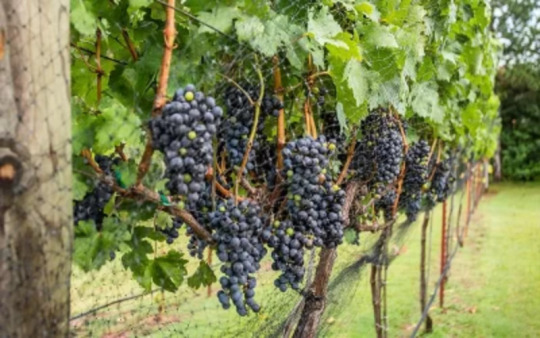
If you want to sample wines that are only created in our state, an Oklahoma winery map can help you find the perfect destination. The wineries and vineyards featured there will each provide a unique experience to its visitors. To plan your perfect wine tasting trip, there are a few questions you should ask yourself when looking at the map.
4 Things to Ask When Looking at an Oklahoma Winery Map
1. How Many Wineries and Vineyards Should I Visit?
Our state has many wineries and vineyards; in fact, over 30 members of the Oklahoma Grape Industry Council are wineries! There are many possible destinations, so try to limit yourself to a select few. When you give yourself the time to enjoy each location, you can gain a true appreciation for the space and its unique wines.
It is easier to determine the ideal number of locations to visit when you consider the length of your trip. If you are planning a day-long tasting experience, limiting yourself to 1-3 wineries and vineyards that are near one another could be best. If your trip will be over multiple days, you can visit several more destinations without feeling rushed.
2. What Time of Year Should I Go?
While you can (usually) visit a winery or vineyard at any time of the year, the season can determine the experience you have there. For example, if you discover Oklahoma vineyards between the late spring and early fall, you may be able to observe parts of the grape growing and harvesting process. If you visit a winery in the fall or winter, you can still have a wonderful tasting experience, and it may feel more personal as there could be fewer visitors.
3. Should I Make Reservations for the Visits?
Many spaces will gladly allow walk-in visitors; however, that is not always the case. To ensure you can visit each of your preferred destinations, call ahead. In addition to reserving a spot in a vineyard tour or wine tasting, you could become one of the first to learn about special events and offerings. Also, some locations are closed for part of the year or may have limited hours due to events, so calling ahead can help you become aware of unexpected changes.
4. Do I Know the Best Way to Discover Oklahoma Wines?
When visiting the wineries or vineyards featured on the map, you can discover Oklahoma wines made on the premises. You should know the types of wine you want to try before visiting the destinations; this can ensure that there is something in each space that appeals to your palate. Remember to also keep an open mind, as trying new wines can help you find new favorites.
To truly appreciate the wines you sample at the wineries or vineyards, try to follow the 4 S’s of wine tasting. When you know how to properly See, Swirl, Sniff, and Spit the wines, you can perfect your palate and notice the intricate flavors of each red, white, or rosé wine. Of course, you should also remember the fifth S: Savoring each wine!
Discover Oklahoma Vineyards and Wineries
If you are planning a wine tasting trip through our state, make sure to visit members of the Oklahoma Grape Industry Council! These wineries and vineyards each produce delicious wines and provide unique experiences. To learn more about our members, please contact us.
#OklahomaWineryMap#discoverOklahomavineyards#discoverOklahomawines#madeinoklahomawine#winetastingokc#buylocalwines#oklahomawineryneari40#oklahomawineryneari35#oklahomawinetours#growinggrapesinoklahoma
0 notes
Text
CAN HYBRID GRAPES BE THE FUTURE OF OKLAHOMA GRAPE WINES?
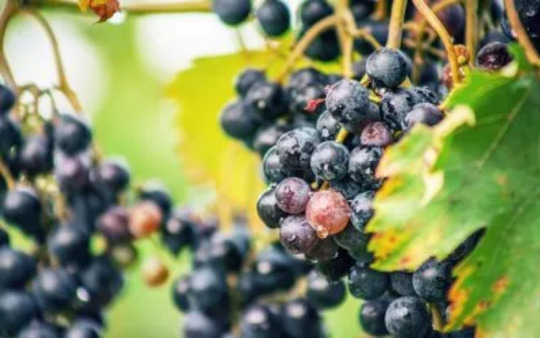
Currently, 129 acres of land are dedicated to growing grapes in Oklahoma. That number has steadily increased over the years, and with the growing popularity of locally-made wines, that amount is sure to increase. As such, vintners and winery owners often look for new methods and strategies to expand and strengthen Oklahoma’s wine and grape industry. Part of that includes cultivating the right grape varieties.
Because of our state’s unique climate, some varieties grow better here than others. As such, to create Oklahoma grape wines, many vineyards will grow:
Cabernet Sauvignon. These grapes create a full-bodied red wine that is rich in tannins. Its aroma features cherries, cassis, and tobacco.
Muscat Blanc. This variety makes a white wine that can be sweet, dry, fortified, or sparkling. Its flavor profile features honey, citrus, and peach.
Riesling. These grapes yield an acidic white wine that can be sweet or dry. The wine tastes like lighter fruits and smells like honey or ginger.
Sangiovese. Rustic versions of this red grape create smokey and herbal wine. Wines can also be made from the more fruit-forward varieties.
Seyval Blanc. This variety creates an acidic white wine that is dry with some minerality. Its profile has notes of melon and green apple.
Tempranillo. These grapes make red wines that taste like blackberries and figs. Its fairly complex aroma features dill, tobacco, and wood.
Vignoles. This variety is used for both very dry and very sweet white wines. Its fruit flavors and floral aroma make it a popular dessert wine.
In addition to these grapes, there are many varieties of hybrid grapes that thrive in Oklahoma’s unique weather conditions.
Hybrid Grapes for Made In Oklahoma Wines
Why Hybrid Varieties are Used when Growing Grapes in Oklahoma
Hybrid grapes are created by crossing two or more existing varieties to get the best qualities of both. For example, with a hybrid variety, a vineyard owner can ensure that their crop has a natural resistance to local weather conditions, yet yield a wine that has the delicious flavor profile of something like a European merlot or chardonnay.
Two hybrid grape varieties that are especially popular for made in Oklahoma wines are Traminette and Chambourcin.
Traminette
This white wine has delicious flavors of various fruits, notably apricot and peach, which are complemented by hints of honey. Whether it is dry or fairly sweet, Traminette wine almost always pairs well with rich foods.
Traminette grapes were created by crossing Gewürztraminer grapes with another existing hybrid (Joannes Seyve 23.416). The cross resulted in grapes that are cold-hardy, resistant to many diseases, and feature the flavor profile that Gewürztraminer wines are known for.
Chambourcin
Well-known for its dark purple color, this red wine is made from one of the most popular hybrid grapes. Chambourcin’s plum and black cherry flavors are beautifully balanced with aromatic hints of herbs and spices.
Unlike the Traminette variety, the exact source of the Chambourcin grape hybrid is unknown. However, it likely contains some Seibel grapes in its lineage. Chambourcin grapes are very productive, resistant to many diseases, and create a wine that is bold and strongly flavored.
Enjoy Oklahoma Grape Wines
Whether you prefer classic flavors or want to expand your palette with something new, you are sure to enjoy quality wines whenever you try something made in Oklahoma. To learn more about local wines or the winemaking process, schedule a winery visit or vineyard tour with a member of the Oklahoma Grape Industry Council.
#growinggrapesinOklahoma#Oklahomagrapewines#madeinOklahomawines#buylocalwines#oklahomawinetours#winetastingokc#oklahomavineyard#oklahomawinery#oklahomawineryneari35#oklahomawinetrails
0 notes
Text
#growinggrapesinoklahoma#traveloklahomavineyards#oklahomavineyardsnearme#madeinoklahomawine#oklahomawinetours#winetastingokc#buylocalwines#oklahomawines#oklahomawineryneari35#oklahomawinetrails
0 notes
Text
BEGINNERS GUIDE TO GROWING GRAPES IN OKLAHOMA
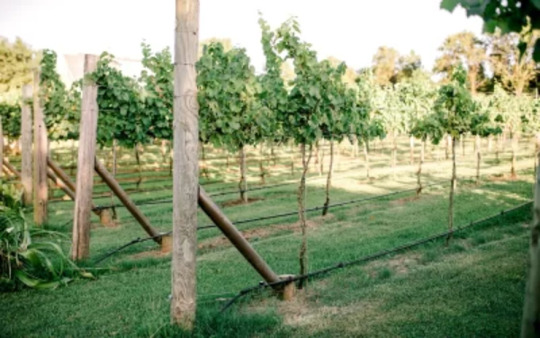
If you want to start a vineyard or produce your own wines, you should learn about growing grapes in Oklahoma. As is the case when cultivating any crop, there is much to consider to ensure the success of your grape-growing endeavor. Here are a few steps that can help when starting a vineyard.
6 Essential Steps for Growing Grapes in Oklahoma
Step 1: Select a Planting Site
If you frequently go on wine tours or travel Oklahoma vineyards, you may have noticed that these places share some similarities regarding their vineyard setup. That is because selecting the right location is essential to ensure the long-term success of a vineyard. Before you start planting anything in your planned vineyard, consider the:
Climate. What is the average temperature in each season? How often does it rain?
Soil. How quickly does the soil drain? Can this affect moisture around the root zone?
Slope. Is there a slope in the area? How will this impact the sunlight and drainage?
Step 2: Select a Grape Variety
Many grape varieties thrive in Oklahoma vineyards near me, so there is sure to be a perfect option for your vineyard. If you want to produce red wine, consider growing:
Cabernet Sauvignon.
Chambourcin.
Merlot.
Sangiovese.
Shiraz/Syrah.
Tempranillo.
Zinfandel.
If your vineyard will primarily produce grapes for white wines, you may want to grow:
Chardonnay.
Muscat Blanc.
Riesling.
Seyval Blanc.
Traminette.
Vignoles.
In addition to these varieties, a range of hybrid grapes grow well in Oklahoma’s climate.
Step 3: Preparing for Planting
Once you know what grapes to plant and where to put them, it is time to begin preparing your vineyard. This step may begin around a year before you start planting, as you must prepare the area by:
Cultivating the soil.
Killing weeds and reducing pests.
Making changes based on soil tests.
Marking your rows.
This process takes a lot of work, but that effort will pay off.
Step 4: Planting the Grapes
After the area is prepared, you can begin planting your grapes at the end of winter or early spring (depending on the grape variety and the area’s climate). Once you have planted the bare-rooted plants and have tied them to a training stake, you should keep them watered, weeded, and free from pests and diseases.
Depending on the grape variety, your intended use of the grapes, and the area’s slope, you may need to construct a trellis for a support system. However, this can often wait until the summer or fall, once the grapevines have grown larger. In addition to making your harvest easier, a trellis can help keep the vines away from small animals.
Step 5: Pruning and Maintenance
Once you start noticing growth on your vines, it can be tempting to let them grow freely until it is time to harvest. However, you will still need to wait to enjoy the rewards of your efforts; grapes can only grow on vines that are at least one year old. Once you reach that point, you will focus on regular maintenance.
Pruning will ensure that new growth develops. The vines will be dormant from December through March, making it the perfect time to prune them. Prime your plants for new growth by:
Cutting each vine back to one or two canes.
Trimming each cane until it has between two and eight buds.
Removing all but the two strongest shoots when growth resumes.
Occasionally pruning back more when needed.
At this point, only the main trunks and year-old growth should remain. Do not hesitate at this step; most places you see when visiting “Oklahoma vineyards near me” cut off more of the vines than they leave.
Of course, when growing grapes in Oklahoma, maintenance goes beyond pruning. Make sure that your plants are well-watered and free from weeds. Watch out for disease and pests, and have a plan in place for what to do if damage occurs. Also, consider fertilizing your grapevines.
Step 6: Harvest and Post-Harvest
The grapes will begin to ripen in July; this period is known as “Veraison.” At this step, keep focusing on maintenance, but start preparing for the harvest season. This may occur in late summer or early fall, depending on your grape variety. After your grapes have been harvested, the vines will go dormant, allowing you to repeat the process once it is time to prune your plants again.
Interested in Visiting Oklahoma Vineyards Near Me?
Whether you are starting your own business or want to enjoy homemade wines from plants grown in your backyard, starting a vineyard is a fun and fulfilling experience. To learn more about growing grapes in our state or to find exciting places to visit when you travel Oklahoma vineyards, get in touch with OGIC.
#growinggrapesinOklahoma#Oklahomavineyardsnearme#travelOklahomavineyards#oklahomawineryneari-35#winetastingokc#madeinoklahomawine#oklahomawinetours#oklahomawines#traveloklahomawinery#oklahomavineyard
0 notes
Text
Our Members | Oklahoma Grape Industry Council
From vineyard and wineries owners to hobbyists, our members stay connected and informed about legislation, education, and available resources. Learn more!

#buylocalwines#discoverOklahomawines#oklahomawineryneari40#winetastingokc#growinggrapesinoklahoma#madeinoklahomawine#oklahomawinetours#oklahomavineyard#oklahomawinery#oklahomawines
0 notes
Text
WHAT TO KNOW ABOUT PAIRING DISCOVER OKLAHOMA WINES WITH FOOD
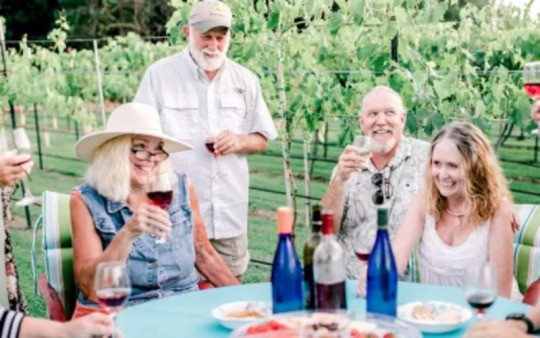
Whether it be a birthday, holiday, or get-together, enjoying delicious Oklahoma grape wine with your meal is an excellent way to enjoy time with your friends and family. It is always best to pair your wine closely with your meal of choice to enhance your dining experience. Here is what you should know when pairing your favorite wines with your meal.
The Basics of Wine Pairings: Food Flavors
To help select your wine choice for your gathering, categorize the main dish of your meal into one of the five food flavor profiles. These profiles can help you determine which wines work best with certain flavors.
Acidic
Acidity is a common flavor in a variety of dishes. The general rule of thumb is that the wine should be equal to or more acidic than the dish, adding a crisp freshness to your meal. If the dish is more acidic, the flavor of the wine will fall flat. Crisp white discover Oklahoma wines, such as Sauvignon Blanc, pair well with acidic dishes such as fish or a fresh salad with an acidic dressing.
Bitter
Unlike acidity, bitter foods should not be paired with bitter wines, as it only enhances the bitterness. Complementary pairings, or those that do not share many flavor compounds, work best with bitter foods. Consider pairing bitter foods with an acidic white wine or red wine with lower tannins, such as Pinot Noir.
Umami
Umami is a unique, earthy flavor that enhances the acidity and bitterness of wine and decreases the perception of sweetness. It is crucial to consider the dish’s salt content. If the meal has an umami flavor with low salt content, it can make the wine taste harder, so try sweet or off-dry discover Oklahoma wines packed full of fruitiness. If the food has an umami flavor with high salt content, it tends to have the opposite effect. Try pairing it with a more fruity, acidic wine to bring some crispness.
Sweet
When it comes to sweet dishes and desserts, it is best to pair these with sweet wines equal to or higher in sugar content than the food. If the dish is sweeter than the wine, your wine will be stripped of its delicious flavors. Likewise, sweet foods can make wines taste bitter and lose their fruit flavors, so avoid pairing sweet foods with wines with high tannins.
Salty
Salt rounds out the taste of many dishes, from fried foods to pasta sauce. Salty foods can help bring out the sweetness of Oklahoma grape wine and hide bitterness and tannins. To bring more balance to a salty dish, try pairing it with acidic, fruity wines or sparkling wines.
Discover Local Wineries On the Oklahoma Winery Map
If you are searching for a wine to compliment your meal, browse your local wineries to find the perfect match. At the Oklahoma Grape Industry Council, we have members throughout the state that sell delicious, locally-made wines. For more information about the OGIC or to learn more about the Oklahoma winery map, please contact us today.
#discoverOklahomawines#Oklahomagrapewine#Oklahomawinerymap#growinggrapesinoklahoma#traveloklahomavineyards#buylocalwines#oklahomawinetours#winetastingokc#oklahomawinery#oklahomawineryneari-35
0 notes
Text
How Is Rosé Wine Made at an Oklahoma Winery? | OGIC
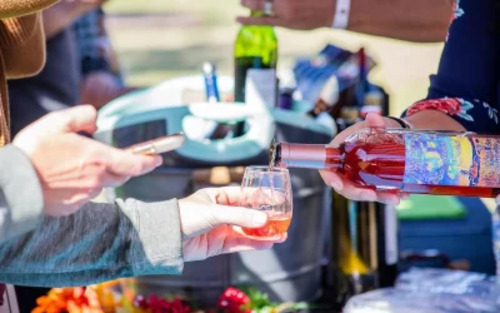
When you visit an Oklahoma winery, there will be many unique wines to try, including rosé. These wines are known for their color, with varieties ranging from pinks so pale that they are almost white to deep shades of raspberry. In addition to the palette, rosés have a delicious flavor profile featuring citrus, spice, fruit, and floral notes.
Because these selections are so unique, you may be interested in learning how these wines are made. Overall, rosés are produced in the same way that red or white Oklahoma wines are. However, there are some key differences.
How Are Oklahoma Wines Made?
After the grapes are grown and harvested, they are brought to a winery. There, they are crushed into a mixture called “must” and fermented. The mixture will also be pressed at some point (before or after fermentation, depending on the type of wine). The wine is then clarified, bottled, and aged to perfection.
When making rosé, there are a few more steps in-between.
An Oklahoma Winery Can Make Rosé Through:
Maceration
The most common rosé production method is “maceration.” For this, red wine grapes are harvested and crushed. Afterward, they are left to soak for 2 to 48 hours, allowing the grape skins to start influencing the juice. This process is called “maceration” – the longer the grapes are macerated, the darker the juice. After this, the skins are strained out of the grape juice, and the fermentation process begins. Due to extended contact with the grape skins, the resulting wines have more texture and body than some other rosés.
Direct Press
The “direct press” style of rosé production is also a very popular approach. To create this wine, red grapes are harvested and pressed to extract their juices. Unlike maceration, the skins and the grape juice are separated almost immediately. While this contact is limited, it still leads to a finished wine that has a lovely pink color. From there, the winemaking process continues in the usual way until the rosé is ready to be enjoyed.
Saignée
Another method is the “saignée” approach. If you create rosé wines this way, you must also make red wine. This method involves “bleeding off” some of the juice from a vat that is being used to make red wine. (The name “saignée” translates from French as “bleeding.”) Because the removed juice had limited contact with the grape skins, the resulting wine will be pink. Saignée wines tend to be more complex and have a fuller body when compared to some other rosé varieties.
Blending
While other methods start with red grapes, “blended” rosés start with white grapes. The winemakers begin by making a white wine; afterward, a small amount of red wine is added, leading to a pink color. If you try a sparkling rosé, it was likely made with this production style. Blending may also be used in addition to maceration, saignée, or direct press. For example, if a direct press wine does not have the desired shade, the winemaker may blend some red wine into the rosé.
Enjoy Rosé on Oklahoma Wine Tours
There are many wineries and vineyards across the state, each producing a unique variety of wines – often including rosé. If you want to try quality wines, consider visiting members of the Oklahoma Grape Industry Council. In addition to creating delicious wines, many of our member vineyards and wineries offer Oklahoma wine tours, so you can learn more about the grape growing and winemaking process.
#OklahomaWinery#Oklahomawines#Oklahomawinetours#oklahomawineryneari-35#madeinoklahomawine#growinggrapesinoklahoma#oklahomavineyard#winetastingokc#oklahomavineyardsnearme#oklahomawinetrails
0 notes
Text
Locate the Nearest Winery in Oklahoma | Oklahoma Grape Industry Council

Our members include local wineries and vineyards where you can shop, eat, taste, and pick a few things for home. Locate your nearest wineries or to learn more about wineries and vineyards!
#oklahomawinery#OklahomaGrapeIndustryCouncil#oklahomavineyardsnearme#growinggrapesinoklahoma#oklahomawinetours#winetastingokc#madeinoklahomawine#oklahomavineyard#oklahomawineryneari-35#traveloklahomavineyards
0 notes
Text
Plan Your Perfect Trip with Oklahoma Winery Maps | OGIC
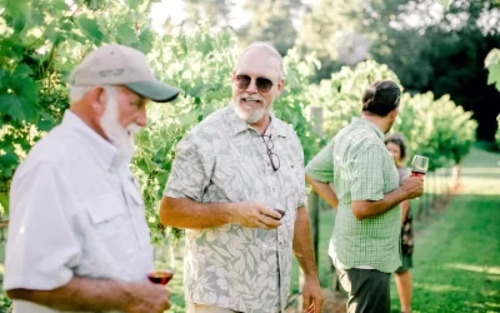
If you are preparing for a couple’s vacation, a getaway with friends, or a trip with your family, an Oklahoma winery map can be a valuable tool as you plan your travels. These lists feature winery and vineyard locations that offer unique wines and experiences – many of which may only be available locally.
When You Choose Your Destinations with an Oklahoma Winery Map:
Figure Out How Long the Trip Will Be
Whether you are visiting one winery or several, give yourself the time to enjoy the unique experiences each location offers. This will not easily be done if you are rushing from place to place. As such, before you start choosing wineries and vineyards to visit, you need to first determine how long your trip will be. Depending on the length of the trip, you may go to one vineyard or several locations.
Pick the Ideal Time of Year to Go
Many people who travel Oklahoma winery and vineyard locations do so from the late spring through early fall. At that time, the weather is pleasant enough to enjoy wine outside, and you may be able to watch the grape harvest. Of course, you can still enjoy a winery trip in the fall or winter. Because there may be fewer people at the winery or vineyard, your experience could be more quiet and personal.
Study the Available Types of Wine
Before you select which locations to visit, it can be helpful to first look into the varieties of wine that the vineyard or winery specializes in. This can ensure that, when you visit the tasting room, you will have at least a few options to look forward to. Of course, as with any wine tasting experience, try to stay open about trying new things.
Reserve Your Tours and Tastings
Many wineries and vineyards gladly take walk-in visitors, but you do not want to drive to your destination, only to discover that a reservation was required. To prevent this issue and ensure that you still have your ideal vacation experience, call before you visit the Oklahoma winery. During your call, you may learn more about available tours and tastings. You could even find out about special events before they are posted online.
Consider Transportation and Lodging
While these trips are meant to be enjoyable, it is important that you enjoy everything responsibility. As you plan your trip, remember to consider your options for transportation and lodging. If you visit a tasting room or a wine tasting event, you could hire a taxi or bring a designated driver. If the winery or vineyard is far from your home, it can be best to book a hotel room.
Travel Oklahoma Winery and Vineyard Locations with OGIC
If you want to enjoy unique wines and fun traveling experiences that you can only find in our state, consider visiting some of the winery and vineyard members of the Oklahoma Grape Industry Council. To learn more about OGIC’s members and our industry as a whole, please contact us.
#OklahomaWineryMaps#growinggrapesinoklahoma#buylocalwines#winetastingokc#oklahomawinetours#madeinoklahomawine#oklahomavineyard#oklahomawines#traveloklahomavineyards#oklahomawineryneari-35
0 notes
Text
Oklahoma Winery & Wines | Oklahoma Grape Industry Council
The Oklahoma Grape Industry Council promotes the entire wine industry in the state; to encourage camaraderie among the hobbyists, viticulturists & vintners alike.
#OklahomaWinery&Wines#oklahomawineryneari – 40#buylocalwines#winetastingokc#oklahomawinetours#madeinoklahomawine#oklahomavineyard#oklahomawines#oklahomavineyardsnearme
0 notes